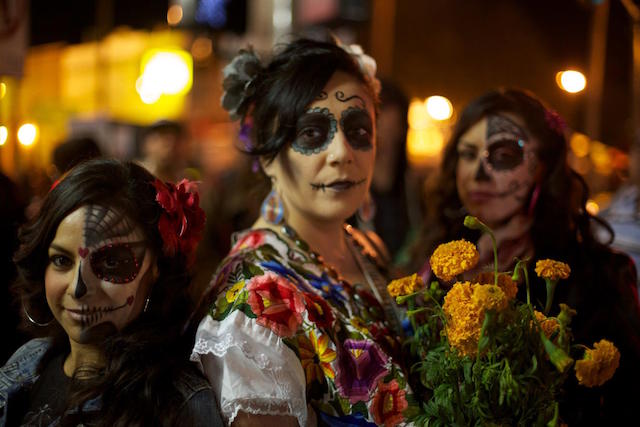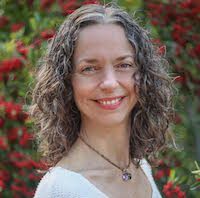
Some Deeper Reflections on Fall’s Spookiest Celebration.
It’s that time of year when ghosts are free to adorn our front door and carved pumpkins light up the night. Halloween is here, and we’re getting ready for spooky delights and trick-or-treat!
But there’s more to Halloween than bats, pumpkins, and skeletons. Deeper meanings, for those who care to look, lie hidden in the symbolism of this festive and playfully frightening holiday. If you’re into personal and spiritual growth, you can honor and explore these opportunities uniquely available during this seasonal celebration.
Overcome Your Fears.
Halloween is the perfect time of year to face what we fear. In fact, this celebration is a lot about embracing the scary things and even having fun with them.
Explore what it feels like to wear a costume of something that scares you, like a spider. Perhaps you can embrace your fears in more healthy ways, develop empathy for that being, and learn to have fun with what you fear.
What do we usually fear the most? The dark—because the dark is the symbol of the unknown. If we can’t see it, we can’t know it, and we believe it’s something to fear.
Going through a haunted house in the dark can be a way of looking fear in the eye and saying, “Hey, you don’t have power over me!” We can practice trusting in ourselves, believing that whatever unknown lies around the corner, we can handle it and maybe even laugh in its face.
We can also recognize that most of what we fear is in our imagination, not in reality. We create scary thoughts all the time that never come true—what would happen if my car got totaled by a big rig?! Chances are, that will never happen. In taking some pause, we can choose to laugh at our catastrophizing just like we would at the skeleton that pops out of a coffin.
Play a New Role.
This holiday is the ultimate costume party. Kids love the opportunity to pick out a costume and become an alter-ego for a day.
But we don’t have to let the kids have all the fun! Who would you like to be for Halloween? Practice taking on the role like an actor and see what it feels like. We can dress up as someone we admire and imagine embodying those qualities. We could be Godzilla and feel big and powerful, playfully releasing any pent-up anger with a terrifying roar.
Given that you are safe and respectful in the roles you explore, allow the spirit of Halloween to broaden your vistas of who you allow yourself to be.
Face your Shadow Self.
When we see the kids come out in monster costumes, we can reflect on our own inner monsters—the parts of ourselves we don’t like to look at. We fear that others will see our selfishness or neediness, our mean streak, or the mistakes we’ve made in the past, so we conceal these disliked qualities and behaviors from others—and even from our own awareness.
This aspect of self that we like to hide in the closet is called the Shadow in Jungian psychology. But Halloween is a great time of year to do some inner healing on our shadow self. To acknowledge these shamed parts of self, bring them into the light and recognize that although they exist, they don’t define who we are, and were probably reactions to events in our lives when we were afraid or felt powerless.
I can’t do shadow work justice in such a brief article, but if you have things about yourself that you haven’t forgiven, shame that weighs you down, or negative beliefs about who you are, this time of year when all the creepies are out of the closet is a powerful time to work with a counselor or mentor on self-forgiveness and healing. It’s possible for those monsters to be transformed into healed and whole aspects of yourself.
Honor your Ancestors.
Halloween is short for All Hallow’s Eve—the day before All Saints Day on November 1st, and All Souls Day on the 2nd. It’s the perfect time to honor our own family lineage or do an ancestry search. We can create a special altar for our ancestors with photos, mementos, and meaningful objects that represent aspects of their lives, occupations, and traditions.
In Mexico, Dia de los Muertos, or the Day of the Dead, is celebrated exuberantly, with elaborate ancestral altars, colorful dress, and spending time at the cemetery. Similarly, we can honor our passed-on family and friends at Halloween—as joyfully or solemnly as we wish.
Accept Death and Reflect on Your Life.
Another aspect of Dia de los Muertos is the acceptance of death as part of life. On this holiday, many Mexicans love to dress up as the dead, with elaborate makeup to mimic skulls and bones. In the United States, we lack a true embrace of death, keeping it more under wraps. But at Halloween, we can take a look at those skeletons and tombstones and reflect on how death brings meaning to life.
We may fear death or look at it as our demise—but is it? The truth is, we really don’t know. All we can say with certainty is that we are here right now. The fact that we will die someday gives meaning to this moment. Each moment we live is precious, and as Krishnamurti said, “[It] is far more important to find out what happens before dying than what happens after.”
The autumn season and Halloween can give us pause to reflect on life and look to death as our ultimate advisor, as Don Juan says in Carlos Castaneda’s books. We can ask, are things really so bad right now? Am I living the life I truly wish to be? Well, I take a look at my death and realize I’m not dead yet, so maybe it’s not so bad. Maybe the fact that someone cut me off on the freeway isn’t so important, after all.
At this time of year, let’s consider what would make our lives more joyful and fulfilling. Facing fear and death might seem scary, but we can choose to reframe our reaction to it and allow it to help us take things a little less seriously, and recognize what is truly meaningful to us.
Whether you want to explore Halloween in a more reflective way or revel in playfulness, a deeper meaning lies under the candy and costumes.
Let October 31st bring you new insights and a transformation in your life!
~
Relephant:
10 Mysterious Facts surrounding the Origins of Halloween.
Samhain: The true meaning of Halloween.
~
Author: Rev. Connie L. Habash
Image: Wikimedia
Editor: Callie Rushton
Copy Editor: Travis May
Social Editor: Waylon Lewis
 Share on bsky
Share on bsky





Read 11 comments and reply